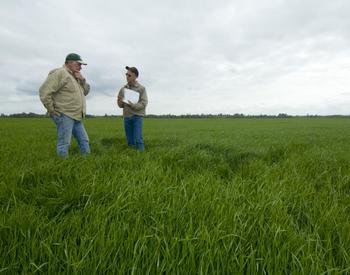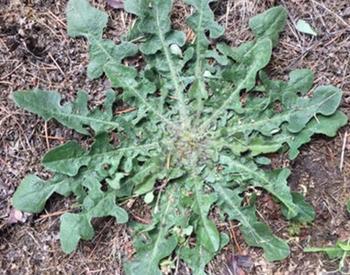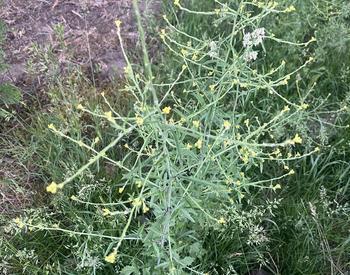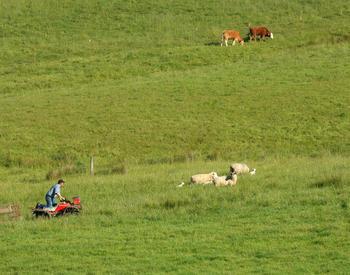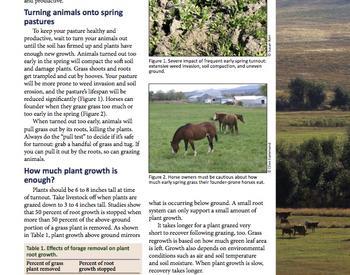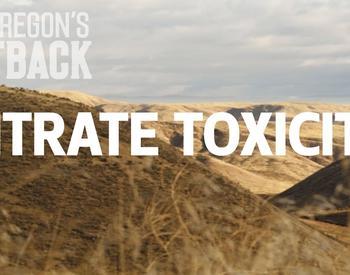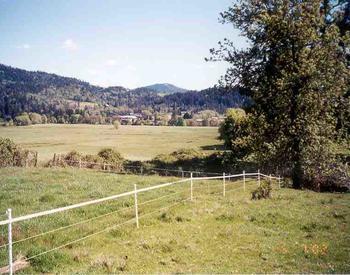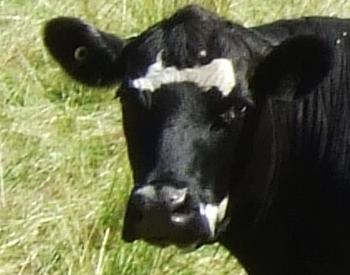Transcript
Welcome to living on the land. Your source of useful information for Eastern Oregon Country living. Brought to you by your Oregon State University Extension Service. Hay is a big part of your livestock's. Diet it's a critical source of vitamin A and protein, so you want to provide your animals with the best quality of hay you can. When it comes to choosing hay, buy from a reputable source. But also use your nose eyes and your hands to make a good purchase. Take a look at the hay. Good grass and alfalfa hay is generally very green. Green Hay has plenty of vitamin A and good quality protein. It will smell fresh and grassy, not moldy, musty, damp or dusty. Good eye is tender to the touch. With thin small stems. Not coarse with thick stems. The best hay has plenty of protein, rich leaves and relatively few stems. And is free of weeds, manure or other debris. Good hay isn't fully headed out. It should contain no more than 10% heads. Avoid alfalfa that is full of blooms. That's a sign of more maturity and lower quality. Around 10% bloom or so is acceptable. Make sure your feed has been tested for nutrient values. To get the best feed for your dollar. And if you're going to feed fescue, hay or grass seed straw, you need to know about endophytes. Endophytes are fungi that produce toxins harmful to livestock. Horses are particularly sensitive to endophytes and can suffer fetal defects or even death. Contact your local Extension Service For more information on sampling for endophytes. You've been listening to living on the land. For more details on pasture and livestock management, contact your local Oregon State University extension agent soil and Water Conservation District, or Oregon Department of Agriculture.
This podcast episode is part of the Living on the Land series. It provides concise information on the basics of managing livestock in winter, including use of sound production practices. Particularly for the region east of the Cascade Mountains.
This is from the Living on the Land series. Download the related PDF - Living on the Land: Winter Livestock Care
The phrase “Living on The Land” is used with permission from Living on The Land Stewardship for Small Acreage, © 2008, UNCE/WSARE.



